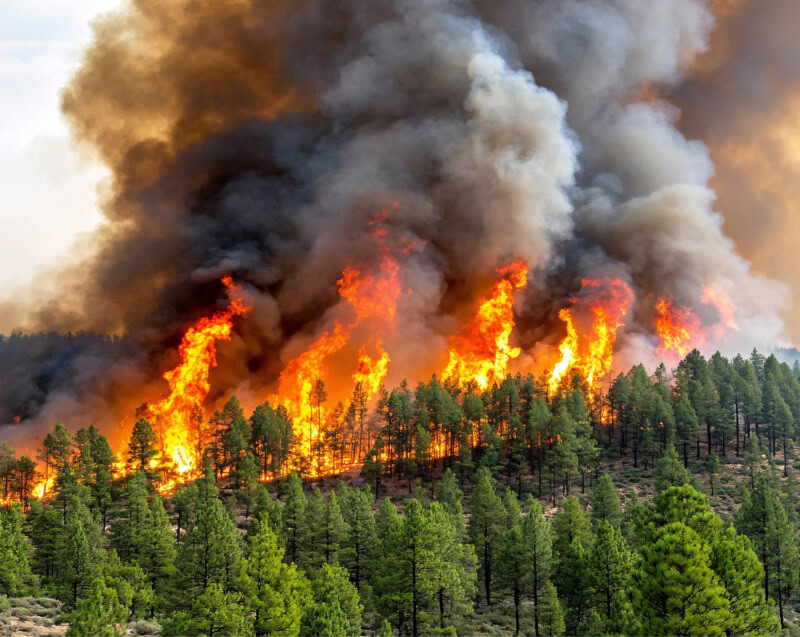Each year, wildfire season presents various preparedness planning obstacles—from equipment acquisition to evacuation training. Add in the uncertainty surrounding the global COVID-19 pandemic, and many communities are now facing unique health and safety challenges. Fortunately, there are advance steps we can take to help reduce our risk. Learn more from our scientific experts below:
First, why is wildfire smoke dangerous to human health?
Wildfire smoke contains fine particles that are produced when wood and other organic materials burn. If inhaled or absorbed, these particles can cause negative health effects such as coughing, wheezing, burning eyes, a runny nose or headaches. They can also increase our susceptibility to respiratory infections like COVID-19 and worsen chronic heart and lung conditions. Wildfire smoke is particularly dangerous for vulnerable populations including children, the elderly, pregnant women, immunocompromised individuals, and those infected with COVID-19.
Has COVID-19 changed the need for preparedness planning?
CTEH strongly recommends all workplaces and households develop comprehensive disaster plans, so they have the proper protocols and supplies in place if emergency situations arise. Advance planning is even more important during COVID-19 due to current supply chain issues and other potentially unforeseen logistical challenges.
If advised to stay indoors, how can we help keep the air clean?
The CDC recommends keeping all windows and doors closed. Individuals should set their homes’ HVAC systems and window air-conditioning units to recirculate mode and close the equipment’s outdoor intake dampers to reduce exposure to possible wildfire smoke. In addition, they should run portable air cleaners or high-efficiency HVAC filters as often as possible on high fan speed. They should also avoid using gas, propane, or wood-burning stoves and furnaces or completing activities that may create fine particles. If available, the CDC recommends homes and workplaces obtain a supply of N-95 respirators. Cloth face coverings offer little protection against wildfire smoke.
How has COVID-19 impacted evacuation protocols?
If asked to evacuate by local or state authorities, the CDC recommends all households and workplaces follow social distancing guidelines. To further protect residents’ safety, the CDC has also encouraged public facilities and shelters in impacted areas to implement stringent health and safety protocols, including limited operating capacities; physical distancing; mask mandates; screening and temperature checks; and thorough cleaning and disinfection.
Have additional questions about workplace preparedness planning during wildfire season and COVID-19? Contact us at webquestion@cteh.com.
Any scientific or medical information included in this article is current as of the date of publication; however, public health knowledge of COVID-19 is rapidly developing. Readers are advised to monitor national, state and local public health agencies for current recommendations regarding any infectious disease.




